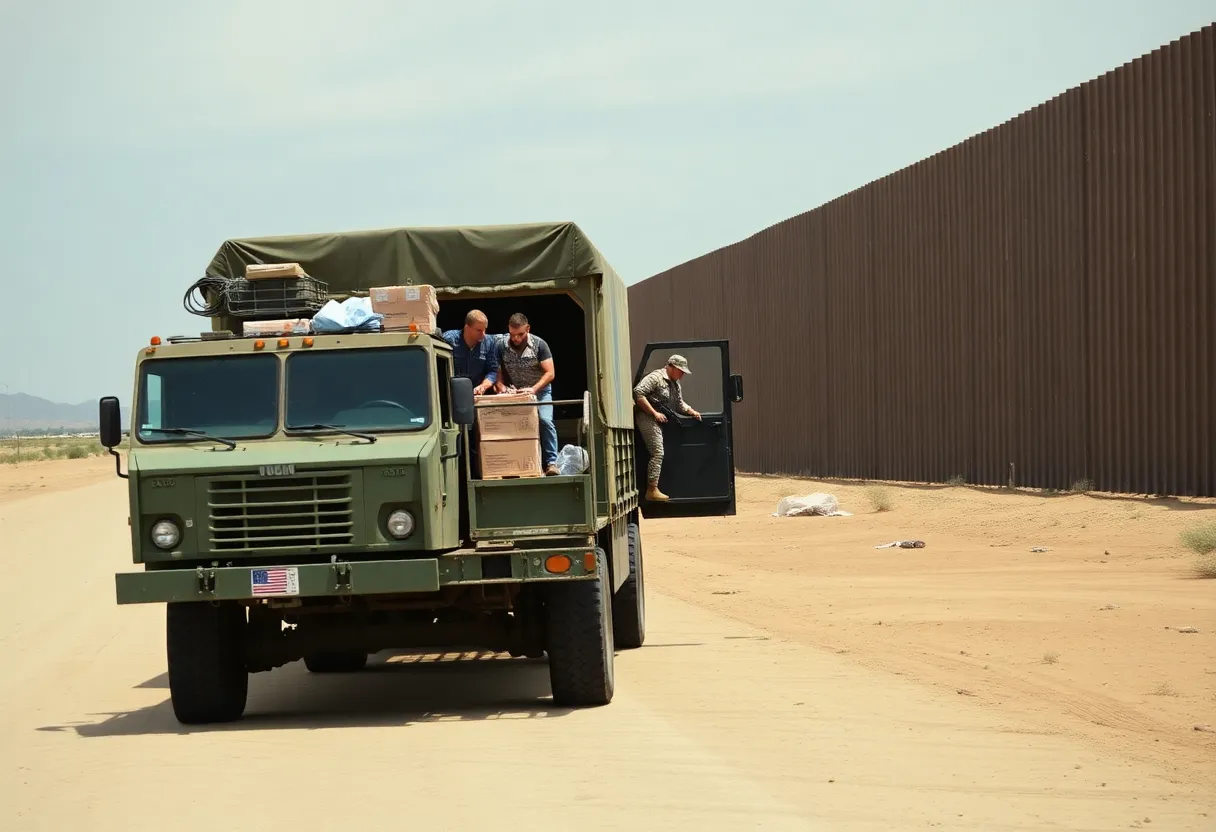

Active-duty troops strengthening security efforts at the U.S.-Mexico border.
Want to target the right audience? Sponsor our site and choose your specific industry to connect with a relevant audience.
Prominent brand mentions across targeted, industry-focused articles
High-visibility placements that speak directly to an engaged local audience
Guaranteed coverage that maximizes exposure and reinforces your brand presence
Interested in seeing what sponsored content looks like on our platform?
May’s Roofing & Contracting
Forwal Construction
NSC Clips
Real Internet Sales
Suited
Florida4Golf
Click the button below to sponsor our articles:
Sponsor Our ArticlesPresident Trump has ordered an additional 1,500 active-duty troops to the U.S.-Mexico border as part of a move to enhance border security. This follows his recent declaration of a national emergency regarding border safety. The new troops will support existing military personnel and assist in logistical operations, reinforcing efforts of the U.S. Customs and Border Protection. However, they are not allowed to engage in law enforcement activities. Critics express concerns about the militarization’s impact on asylum claims amidst a noticeable decline in illegal crossings.
In a move that’s turning heads and generating discussions, President Trump has ordered the deployment of an additional 1,500 active-duty troops to the southern border with Mexico. This decision comes just two days after he declared a national emergency regarding border security. The goal? To enhance safety and operations along the border.
These new troops will join roughly 2,200 active-duty service members already stationed at the border as part of Joint Task Force-North, which operates out of El Paso, Texas. This existing force has been supporting the efforts of U.S. Customs and Border Protection (CBP) by focusing on essential logistical work. This includes tasks like data entry, helping monitor border activities, and providing maintenance for various vehicles involved in operations.
The initial deployment of these additional troops is expected to begin within the next 24 to 48 hours. Acting Secretary of Defense Robert Salesses has indicated that the new troops will include various types of personnel, such as ground troops, helicopters, and intelligence analysts. Their primary mission will be to enhance the capabilities for detection and monitoring at the border.
In conjunction with the deployment of ground troops, four aircraft—specifically two C-17s and two C-130s—are being sent to locations like San Diego and El Paso. They will support the repatriation of migrants back to their home countries. This added support from air operations could streamline the movement of individuals who may not have the legal right to remain in the U.S.
Among the 1,500 new troops being deployed, approximately 500 Marines from Camp Pendleton are included. These Marines will serve both as rapid response units and long-term support forces. Their presence signals a commitment to maintaining “operational readiness” for Border Patrol and offering assistance in command-and-control centers.
While the current plan is to send a limited number of troops right now, there’s a possibility that troop numbers could escalate to as high as 10,000 in the future. However, officials are cautious and want to mitigate any potential strain on military resources. It’s worth noting that National Guard troops—which number around 4,500—are also currently stationed along the border under what’s known as Operation Lone Star.
It’s important to understand that none of these active-duty troops will take on any law enforcement roles. This means they won’t be involved in making arrests or conducting searches on migrants due to existing laws governing military conduct within the U.S., notably the posse comitatus law, which restricts military personnel from engaging in such actions.
Interestingly, President Trump mentioned he might consider invoking the Insurrection Act within the next 90 days. This could potentially allow active-duty troops to take on law enforcement responsibilities, but for now, those who will serve at the border are primarily confined to logistical support and other non-law enforcement duties.
Amidst all of this, data shows a recent decline in illegal crossings at the border, which have decreased to between 1,100 to 1,300 migrants daily. While some view increased military presence as a step towards securing the border, critics are worried that such militarization could complicate legitimate asylum claims and lead to confrontational tactics against migrants.
The deployment of these troops is a clear move to bolster existing efforts along the U.S.-Mexico border. Whether this will yield the intended results or complicate the asylum process remains to be seen, but one thing is for sure—this development is a topic of conversation and concern for many.
}
News Summary Myrtle Beach is currently grappling with severe wildfires that have led to a…
News Summary A heartbreaking murder-suicide in North Charleston has left the community in shock. Darius…
News Summary Over 170 wildfires are spreading across North and South Carolina, particularly affecting Myrtle…
News Summary A devastating two-vehicle collision in Darlington County on Friday evening claimed the lives…
News Summary In a thrilling Sweet 16 clash, the South Carolina Gamecocks narrowly defeated the…
News Summary On Thursday morning, the Tri-State area faced severe thunderstorms that led to significant…